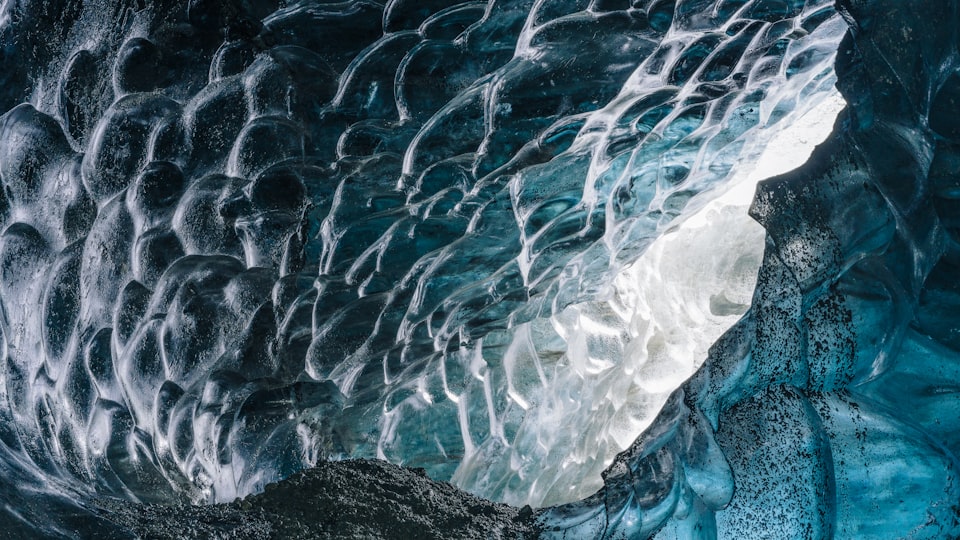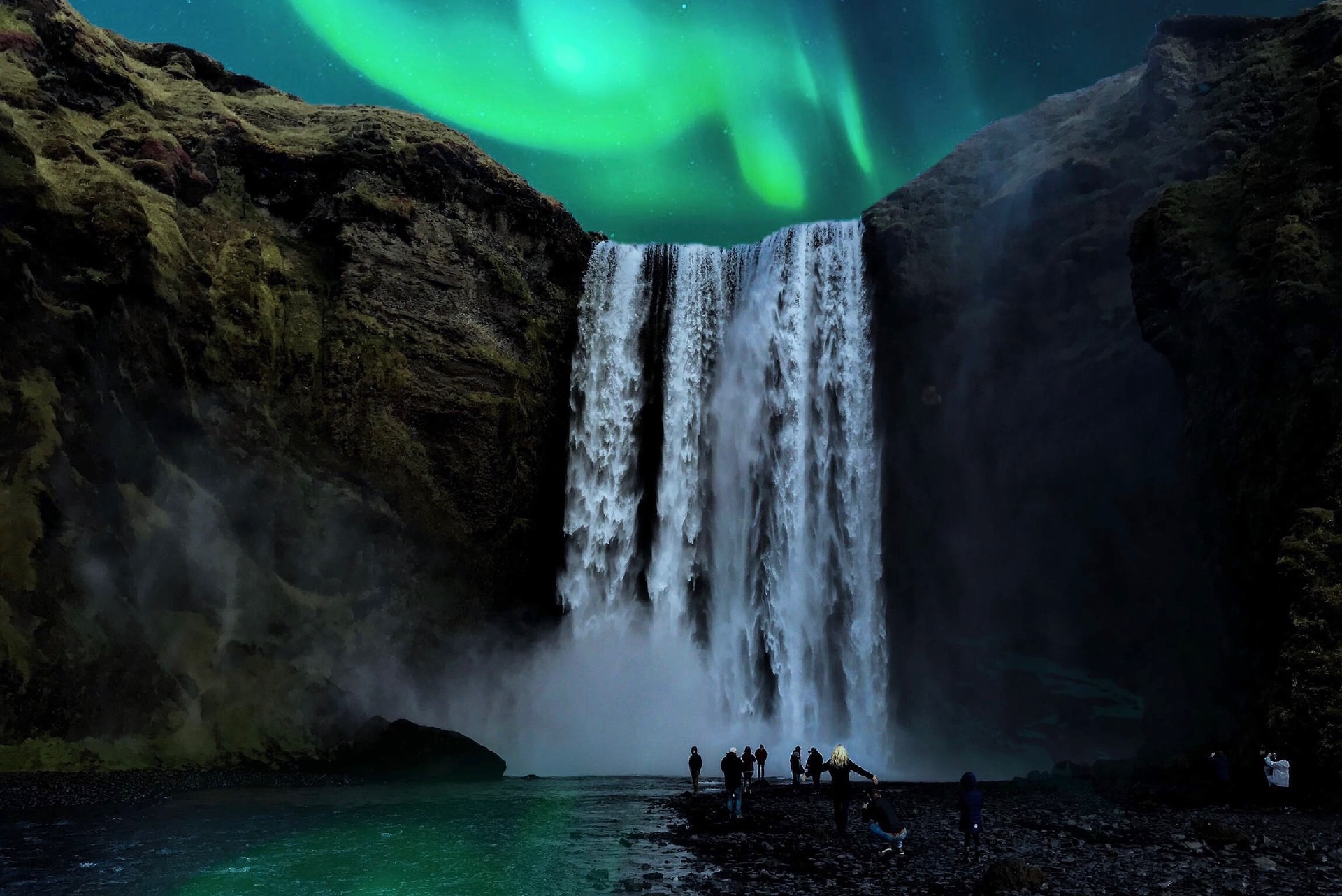Ice caves in the winter (November to March)
This season is a little longer, a little colder without a sub-zero temperature (Most of the time), and a whole lot of beautiful. Filled with snowy landscapes, dancing northern lights, and marvelous blue ice caves. If you love yourself some adventure, a tad bit of chilly winds, and are willing to test your skills of survival then this is the weather for you.
The temperature usually sits around zero degrees Celcius, courtesy of the Gulf stream. With a little drop in temperature, the ideal time created by the moving and melting glaciers in summer, winter causes them to temporarily freeze in time in their natural form. Thus, they’re safe for the time being. They’re frozen long enough for us to explore them before they start melting and consequently be harmful by the spring.
The two-day glacier lagoon and ice cave discovery tours enable the tourists to visit snake-like tunnels, open archways, and confined caverns. Every single one varying and being stunning in its own beautiful way.

Springtime serenity (April & May)
If you’re someone who enjoys a quiet time residing in solitude, then this is it for you. On contrary to the popular belief that Iceland has become slightly overpopulated, it still remains a very peaceful place. Although this is the ideal time to come considering the fact that there are fewer tourists this time of the year.
The end of winter in March, April, and May mark the onset of the spring season. The atmosphere is almost perfect. The sun shines enough to keep you warm and keep the peaks of mountains and volcanoes covered with snow. Just like icing on top of a cake. Making it ideal for hikes, glaciers, and snow showers that might surprise you. Not forgetting to mention how all of it is so picturesque!
As April progresses, the days lengthen. Thus, you can add some more exploring and adventures to your list of things to do. Mid-April is the time for migrating sea birds and whales to return to Iceland’s beach shores. The flowers start blooming and everything around rejuvenates. The number of sheep on the Island exceeds that of the people living there. If bumping into ample of baby sheep is something you look forward to then the birthing season is the best time for it. Now you ask when that’ll be? ( Extra brownie points for guessing! )
You guessed it right, the springtime! On a 2 day Jökulsárlón Glacier Lagoon tour, one sleeps overnight at a working sheep farm, Lilja, and witnesses baby sheep closely. This farm, fortunately expands to be a hygienic and cozy hotel too.

The Northern Lights in Autumn ( September and October )
If Northern lights are on the top of your priority list, then take a calendar and put a pin on the time around the autumnal equinox and come visit. The skies and clearer and it isn’t dead of winter. Speaking from personal observations and the presence of a prominent meteorologist we can back our statement, that autumn is indeed a better time to come see the Northern Lights. If you like surprises and not knowing what comes next then these are the months for you. One day you would be wearing a t-shirt and on the other sweaters against a snowstorm. You are likely to experience all 4 seasons in the span of these 2 months. The days are long and warm enough to experience all the spring and summertime activities. On the other hand, nights are dark enough to gaze at the starry sky.
Northern lights overnight tours to the Snæfellsness Peninsula are started during this time. One can look up at the sky for hours with its snow-capped volcanoes, cracked lava fields, and turbulent shores in the surroundings.
Heard of rettir? It’s the annual round-up of free-grooving sheep by their local farmers as the temperature drops. If you’re fortunate enough you’d get to witness hundreds of sheep blocking the road and causing a good amount of traffic.

Summertime with the Midnight Sun (June, July, and August)
If you like the warm summer season, watching sunrise and sunset with a scenic backdrop, drinks, and hot springs, then this is the time for you.
Moreover, if you’d like to do all of them at once then there’s no stopping you. Book tickets and head over to Iceland in the summer. You’d be crazy to not want to sit in a hot spring under the midnight sun and get to witness it setting and rising, both within a few spans of minutes. You heard that right! Just one of the many beautiful things that happen in Iceland. Spring is the season where life blooms and in summer it thrives! Iceland’s flatlands for the time being are covered with purple Alaskan lupines. Following them are the Atlantic puffins. Around 10 million of them house on the Icelandic cliff sides. Throw in the release of 400,000 or so sheep into the wild and over 20 different whale species coming to the shore to mate. For a second there, it will be hard to believe that you are on a disjunct island on the boundary of the Polar circle.
Another perk of going in summer is being able to explore the glaciers. Put on some crampons and go on hikes to the places that are less accessible in winter. Thanks to the crunchy summer crust, unlike the hard and slicker winter ice.




0 Comment